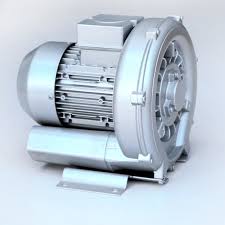Ring channel blower
A ring channel blower, also known as a side channel blower, is a type of positive displacement pump that creates airflow by using a rotating impeller within a channel. It’s often used when higher pressures or vacuums are needed compared to centrifugal fans, or when a compact design is desired. These blowers are known for their versatility and are used in various applications across different industries.
How it Works:
Ring channel blowers utilize the centrifugal force generated by a rotating impeller within a channel. As the impeller spins, it draws in air or gas, accelerates it outwards due to the centrifugal force, and then pushes it through the discharge port.
Key Features and Benefits:
- High Pressure/Vacuum: Suitable for applications requiring higher pressures or vacuums than centrifugal fans.
- Compact Design: Offers a relatively small footprint compared to other blower types.
- Low Noise: Can operate with lower noise levels than some other blower types, especially with appropriate silencers.
- Versatility: Used in a wide range of applications including wastewater treatment, pneumatic conveying, and printing.
- Continuous Operation: Designed for reliable, continuous operation.
- Contactless Compression: The compression process is contactless, resulting in oil-free operation and preventing contamination.
- Dry Blowing: Can be used with air knives for efficient drying applications.
Applications:
- Wastewater Treatment: Providing aeration for biological processes.
- Pneumatic Conveying: Moving materials through pipelines.
- Vacuum Packaging: Creating a vacuum for sealing packages.
- Printing Industry: Assisting with various printing processes.
- Drying: Used with air knives for drying applications in various industries.
- Cooling: Used in cooling systems for various applications.
- Dust Collection: Used in dust collection systems.
Accessories and Considerations:
- Silencers: Inlet and discharge silencers help reduce noise levels.
- Filters: Filters protect the blower from particulate matter.
- Return Valves: Used to control airflow and pressure.
- Flexible Tubes vs. Pipes: Flexible tubes can introduce more pressure loss than rigid pipes.
